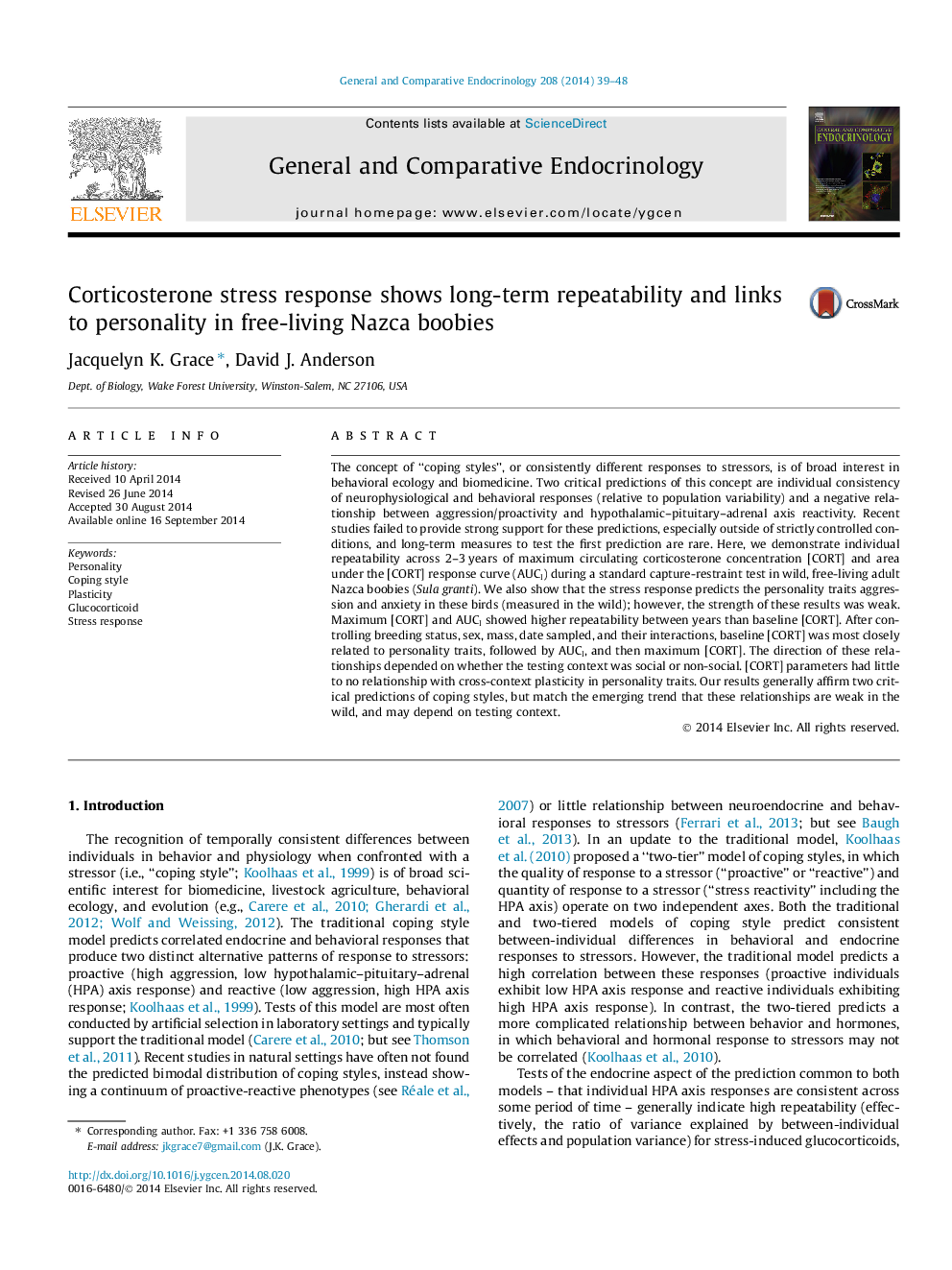| Article ID | Journal | Published Year | Pages | File Type |
|---|---|---|---|---|
| 2800124 | General and Comparative Endocrinology | 2014 | 10 Pages |
•Support for predictions of “coping style” in a wild seabird, but weak.•Maximum circulating corticosterone was repeatable across 2–3 years.•Area under the corticosterone curve was repeatable across years.•Baseline circulating corticosterone had very low repeatability across years.•Corticosterone stress response predicted personality traits weakly.
The concept of “coping styles”, or consistently different responses to stressors, is of broad interest in behavioral ecology and biomedicine. Two critical predictions of this concept are individual consistency of neurophysiological and behavioral responses (relative to population variability) and a negative relationship between aggression/proactivity and hypothalamic–pituitary–adrenal axis reactivity. Recent studies failed to provide strong support for these predictions, especially outside of strictly controlled conditions, and long-term measures to test the first prediction are rare. Here, we demonstrate individual repeatability across 2–3 years of maximum circulating corticosterone concentration [CORT] and area under the [CORT] response curve (AUCI) during a standard capture-restraint test in wild, free-living adult Nazca boobies (Sula granti). We also show that the stress response predicts the personality traits aggression and anxiety in these birds (measured in the wild); however, the strength of these results was weak. Maximum [CORT] and AUCI showed higher repeatability between years than baseline [CORT]. After controlling breeding status, sex, mass, date sampled, and their interactions, baseline [CORT] was most closely related to personality traits, followed by AUCI, and then maximum [CORT]. The direction of these relationships depended on whether the testing context was social or non-social. [CORT] parameters had little to no relationship with cross-context plasticity in personality traits. Our results generally affirm two critical predictions of coping styles, but match the emerging trend that these relationships are weak in the wild, and may depend on testing context.
